Reaction of the endogenous regulatory mechanisms to early weekday wakeups: a review of its popular explanations in light of model-based simulations
- PMID: 38169971
- PMCID: PMC10760451
- DOI: 10.3389/fnetp.2023.1285658
Reaction of the endogenous regulatory mechanisms to early weekday wakeups: a review of its popular explanations in light of model-based simulations
Abstract
Introduction: Several widely held explanations of the mechanisms underlying the responses of endogenous sleep-wake-regulating processes to early weekday wakeups have been proposed. Here, they were briefly reviewed and validated against simulations based on the rhythmostatic version of a two-process model of sleep-wake regulation. Methods: Simulated sleep times on weekdays and weekends were compared with the times averaged over 1,048 samples with either earlier or later weekday risetimes. In total, 74 paired samples were collected before and during lockdown, and 93 paired samples were collected during early and later school start times. Results: The counterintuitive predictions of the simulations included the following: 1) only one night of ad lib sleep is sufficient to restore the endogenously determined sleep times after 1 day/5 days of larger/smaller reduction/extension of the sleep/wake phase of the circadian sleep-wake cycle; 2) sleep loss on weekdays is irrecoverable; 3) irrespective of the amount of such deadweight loss, sleep on weekends is not prolonged; and 4) the control of the circadian clocks over the sleep-wake cyclicity is not disrupted throughout the week. Discussion: The following popular explanations of the gaps between weekends and weekdays in sleep timing and duration were not supported by these simulations: 1) early weekday wakeups cause "social jetlag," viewed as the weekend and weekday (back and forth) shifts of the sleep phase relative to the unchanged phase of the circadian clocks, and 2) early weekday wakeups cause an accumulation of "sleep debt paid back" on weekends, or, in other terms, people can "catch-up" or "compensate" sleep on weekends.
Keywords: circadian clocks; model; simulation; sleep deficiency; sleep–wake regulation.
Copyright © 2023 Putilov.
Conflict of interest statement
The author declares that the research was conducted in the absence of any commercial or financial relationships that could be construed as a potential conflict of interest. The authors declares that they were an editorial board member of Frontiers, at the time of submission. This had no impact on the peer review process and the final decision.
Figures
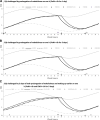

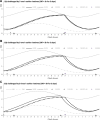


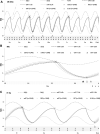
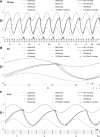
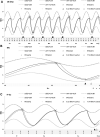
Similar articles
-
Evening chronotype, late weekend sleep times and social jetlag as possible causes of sleep curtailment after maintaining perennial DST: ain't they as black as they are painted?Chronobiol Int. 2020 Jan;37(1):82-100. doi: 10.1080/07420528.2019.1684937. Epub 2019 Nov 7. Chronobiol Int. 2020. PMID: 31698968
-
Sleep during "lockdown" highlighted the need to rethink the concept of weekend catch-up sleep.Sleep Breath. 2022 Dec;26(4):2001-2007. doi: 10.1007/s11325-021-02492-z. Epub 2021 Nov 20. Sleep Breath. 2022. PMID: 34800246 Free PMC article.
-
Weekend sleep after early and later school start times confirmed a model-predicted failure to catch up sleep missed on weekdays.Sleep Breath. 2023 May;27(2):709-719. doi: 10.1007/s11325-022-02648-5. Epub 2022 Jun 3. Sleep Breath. 2023. PMID: 35657472 Free PMC article.
-
The sleep paradox: The effect of weekend catch-up sleep on homeostasis and circadian misalignment.Neurosci Biobehav Rev. 2025 Aug;175:106231. doi: 10.1016/j.neubiorev.2025.106231. Epub 2025 May 22. Neurosci Biobehav Rev. 2025. PMID: 40412461 Review.
-
Sleep timing, chronotype and social jetlag: Impact on cognitive abilities and psychiatric disorders.Biochem Pharmacol. 2021 Sep;191:114438. doi: 10.1016/j.bcp.2021.114438. Epub 2021 Feb 2. Biochem Pharmacol. 2021. PMID: 33545116 Review.
Cited by
-
Non-Pharmacological Intervention for Personalizing Sleep Quality through Gentle Rocking Motion.J Pers Med. 2024 Feb 19;14(2):218. doi: 10.3390/jpm14020218. J Pers Med. 2024. PMID: 38392651 Free PMC article.
-
Nonlinear association between weekend sleep recovery (WSR) and insulin resistance: benefits in males and short weekday sleepers.Endocr Connect. 2025 Jul 15;14(7):e250191. doi: 10.1530/EC-25-0191. Print 2025 Jul 1. Endocr Connect. 2025. PMID: 40590721 Free PMC article.
-
Can the Brain's Thermostatic Mechanism Generate Sleep-Wake and NREM-REM Sleep Cycles? A Nested Doll Model of Sleep-Regulating Processes.Clocks Sleep. 2024 Feb 19;6(1):97-113. doi: 10.3390/clockssleep6010008. Clocks Sleep. 2024. PMID: 38390949 Free PMC article.
References
-
- Borbély A. A. (1982). A two process model of sleep regulation. Hum. Neurobiol. 1, 195–204. - PubMed
LinkOut - more resources
Full Text Sources

